Table of content
Sichuan cuisine, renowned for its bold flavors and fiery kick, has captivated food enthusiasts worldwide with dishes that balance spiciness, numbing sensations, and aromatic complexity. Among its iconic creations, La Zi Ji (Sichuan-style spicy diced chicken) stands out as a crowd-pleaser, offering a symphony of textures and tastes that linger long after the last bite. This dish, often translated as “spicy diced chicken with chili peppers,” combines tender chicken pieces with a medley of dried chilies, Sichuan peppercorns, and fragrant seasonings, all stir-fried to perfection in a sizzling wok. Whether you’re a seasoned home cook or a curious novice, mastering this recipe will elevate your culinary repertoire and transport your taste buds to the bustling streets of Chengdu.
The Essence of Sichuan-Style Spicy Diced Chicken
At its core, La Zi Ji is a celebration of contrasts: crispy yet tender chicken, fiery heat tempered by numbing Sichuan peppercorns, and the earthy depth of fermented soybean paste. The dish’s allure lies in its ability to harmonize these elements, creating a memorable dining experience that is both addictive and satisfying. While the recipe may seem intimidating at first glance, breaking it down into manageable steps ensures success. This guide will walk you through every phase, from selecting the finest ingredients to achieving that coveted balance of flavors.
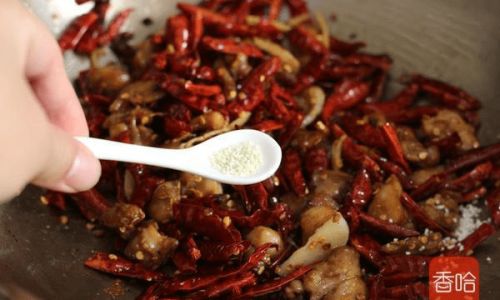
Ingredients: Assembling the Building Blocks
To recreate the authentic taste of La Zi Ji, gather the following ingredients. Each component plays a pivotal role in shaping the dish’s character, so precision is key.
For the Chicken Marinade:
- 5 lbs (680g) boneless, skinless chicken thighs: Opt for thighs over breasts, as their higher fat content ensures juiciness during frying.
- 1 tbsp soy sauce: Use dark soy sauce for richness, or light soy sauce for a saltier profile.
- 1 tbsp Shaoxing wine: This Chinese cooking wine adds depth and neutralizes any gamey flavors.
- 1 tsp sesame oil: A touch of toasted sesame oil enhances the dish’s aroma.
- 1 tbsp cornstarch: Acts as a tenderizer and helps the chicken achieve a crispy coating when fried.
- 1/4 tsp white pepper: Offers a mild, floral heat that complements the chili peppers.
For the Aromatic Base:
- 15-20 dried red chili peppers: Choose medium-heat varieties like Chao Tian Jiao (Sky-Facing Peppers) for vibrant color and moderate spice.
- 2 tbsp Sichuan peppercorns: Freshly toasted and ground peppercorns provide the dish’s signature numbing sensation (ma la).
- 4 garlic cloves, minced: Infuses the dish with pungent sweetness.
- 1 tbsp fresh ginger, grated: Adds a warm, citrusy note.
- 3 green onions, sliced: Separate the white and green parts; use the whites for cooking and greens for garnish.
For the Sauce Mixture:
- 1 tbsp doubanjiang (fermented broad bean paste): The soul of Sichuan cooking, this paste contributes savory umami and a reddish hue.
- 1 tbsp soy sauce: Adjust to taste, as doubanjiang can be salty.
- 1 tsp sugar: Balances the heat and saltiness.
- 1 tbsp Chinese black vinegar: Provides a subtle tanginess to cut through the richness.
- 1/4 cup chicken broth: Use low-sodium broth to control salt levels.
For Frying and Finishing:
- 2 cups cooking oil: Peanut or vegetable oil works best for high-heat frying.
- 1/4 cup roasted peanuts or cashews (optional): Adds crunch and nutty flavor.
- 1 tbsp toasted sesame seeds: For garnish.
- Handful of cilantro leaves: A fresh, herbal finish.
Step-by-Step Preparation: Crafting the Perfect La Zi Ji
Marinating the Chicken
The foundation of great La Zi Ji begins with a meticulously prepared marinade. Cut the chicken thighs into 1-inch cubes, ensuring uniformity for even cooking. In a bowl, combine the chicken with soy sauce, Shaoxing wine, sesame oil, cornstarch, and white pepper. Mix thoroughly, massaging the marinade into the meat. Cover and refrigerate for at least 30 minutes (or up to 4 hours) to allow the flavors to meld and the cornstarch to tenderize the chicken.
Preparing the Aromatics and Sauce
While the chicken marinates, prepare the remaining components. Snip the dried chili peppers into 1-inch segments, discarding as many seeds as possible to control spiciness. Toast the Sichuan peppercorns in a dry pan over low heat until fragrant, then grind them coarsely using a mortar and pestle or spice grinder.
In a small bowl, whisk together the doubanjiang, soy sauce, sugar, black vinegar, and chicken broth. This sauce will form the dish’s flavorful backbone, so taste and adjust seasonings if needed.
Double-Frying the Chicken for Crispiness
Achieving the dish’s signature crunch requires a two-step frying process. Heat the cooking oil in a wok or deep skillet to 350°F (175°C). Working in batches to avoid overcrowding, fry the marinated chicken for 3-4 minutes until golden brown. Remove with a slotted spoon and drain on paper towels.
Increase the oil temperature to 375°F (190°C) and refry the chicken for an additional 1-2 minutes. This second fry removes excess moisture and ensures maximum crispiness. Set aside.
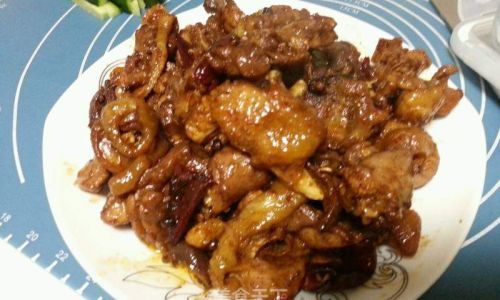
Stir-Frying the Flavors
Carefully discard all but 2 tbsp of oil from the wok. Return it to medium-high heat and add the dried chili peppers, Sichuan peppercorns, garlic, ginger, and the white parts of the green onions. Stir-fry for 30 seconds until fragrant, taking care not to burn the aromatics.
Stir in the sauce mixture and bring it to a simmer. Toss the double-fried chicken into the wok, stirring vigorously to coat each piece in the spicy sauce. Cook for 2-3 minutes until the sauce thickens and clings to the chicken.
Final Touches and Serving
Fold in the roasted peanuts or cashews (if using) and stir briefly to combine. Transfer the chicken to a serving platter and garnish with the sliced green onions, toasted sesame seeds, and cilantro leaves. Serve immediately with steamed jasmine rice or cold beer to temper the heat.
Tips for Perfection
- Adjusting Spice Levels: For a milder dish, reduce the number of chili peppers or remove the seeds entirely. Conversely, add a pinch of chili flakes for extra fire.
- The Power of Ma La: Sichuan peppercorns should be freshly toasted and ground to unlock their citrusy, numbing essence. Avoid overcooking them, as they can turn bitter.
- Wok Height: Use a wok with high sides to contain splatters during frying. If unavailable, a deep skillet works as a substitute.
- Oil Temperature: Maintaining precise oil temperatures is crucial for crispy chicken. Use a kitchen thermometer for accuracy.
Variations and Customizations
- Vegetarian Twist: Substitute the chicken with oyster mushrooms or seitan, following the same marinating and frying steps.
- Nut-Free Option: Omit the peanuts or replace them with toasted sunflower seeds.
- Extra Aroma: Add sliced celery or bell peppers during the stir-fry phase for a vegetable boost.
The Cultural Significance of La Zi Ji
La Zi Ji is more than a dish—it’s a testament to Sichuan’s culinary philosophy, where ingredients are transformed through fire, spice, and skill. The dish’s roots trace back to the Qing Dynasty, evolving from humble peasant fare to a global sensation. Today, it symbolizes the region’s resilience and creativity, embodying the balance between harsh heat and inviting warmth.
Conclusion: A Feast for the Senses
Crafting La Zi Ji is an act of alchemy, turning simple components into a dish that dazzles the palate and sparks conversation. Each bite offers a dance of textures—crunchy chicken, fiery peppers, and fragrant herbs—while the interplay of spices leaves a lingering hum of satisfaction. Whether shared with friends at a lively banquet or savored alone as a rewarding meal, this Sichuan classic invites you to embrace the thrill of bold flavors. So, don your apron, ignite your wok, and let the sizzle of spices guide you to culinary glory. Your taste buds will thank you.
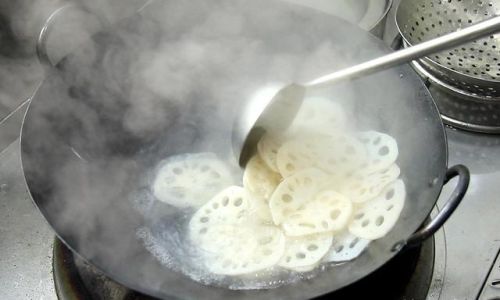
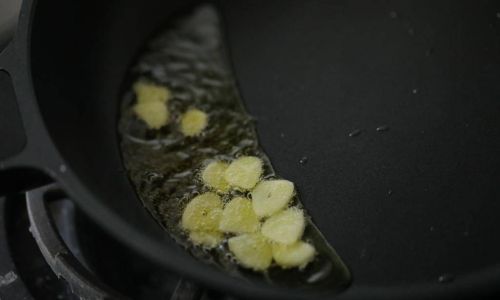
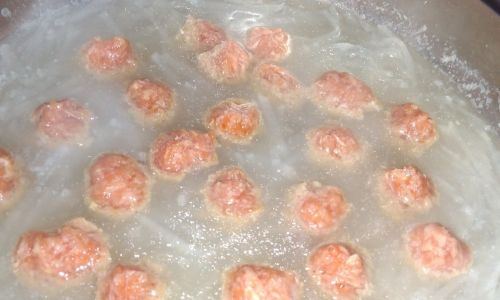
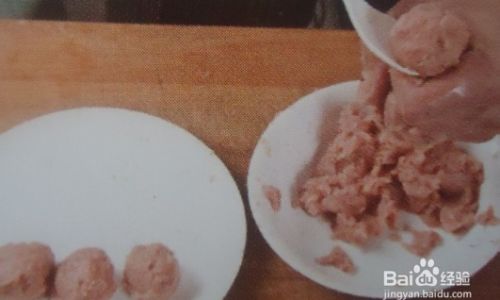

0 comments